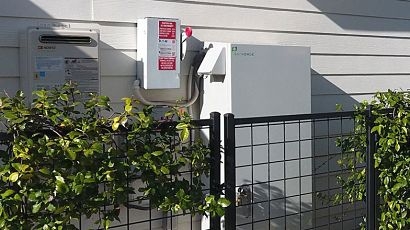
The net aggregated power flow at the virtual node level is controlled through coordinated operations at the individual unit level based on the predicted load, PV generation and available storage capacity. The project aims to demonstrate how centrally managed distributed resources on the Japanese electricity grid can help ensure greater reliability, an issue that received widespread attention following the Great East Japan Earthquake of March 2011.
The project, operated in cooperation with Mitsui & Co Ltd, connects multiple storage units into a Virtual Power Plant (VPP) managed by Sunverge’s energy management platform. This in turn provides the grid operator with an energy control system that can be adjusted within 15 minutes, or less, of major changes in demand. It will demonstrate several important abilities of the system:
Site Demand Target – The ability to maintain a target wattage reading at the individual meter level, dispatching power if the net load is greater than the target (i.e. load minus PV generation) or importing power if the net load is below the target.
Demand Charge Reduction – The Sunverge Demand Charge Reduction algorithm will set a Site Demand Target for the unit based on the forecasted load for the site, the forecasted PV for the site and the current battery stored energy. The resulting Site Demand Target value protects the unit from energy depletion due to dispatch and from reaching maximum stored energy capacity using power imported from the grid.
Virtual Power Plant (VPP) Demand Charge Reduction – Similar to the single unit Demand Charge Reduction use case, with the addition of certain operations performed in aggregate over multiple units rather than for an individual unit.
Sunverge’s energy management platform provides the energy control system required for the operation of the VPP. The VPP will function as an adjustment and supply source of the energy, addressing the demand for increased grid reliability.
VPPs are supported by the Japanese government, which wants renewables to account for at least 20 percent of the country’s power generation by 2030. The Japanese Ministry of Economy, Trade and Industry has so far designated a total of 7 billion yen ($59.4 million) in subsidies for VPP development in fiscal years 2016 to 2017.
“The ability to aggregate and manage distributed energy resources as a fleet and combining and managing a logical subset and grouping as a virtual nanogrid is increasingly important in order to make the grid more stable, resilient and dynamic” said Sunverge CEO Martin Milani.”
Image: Sunverge One Energy Storage system
For additional information:

